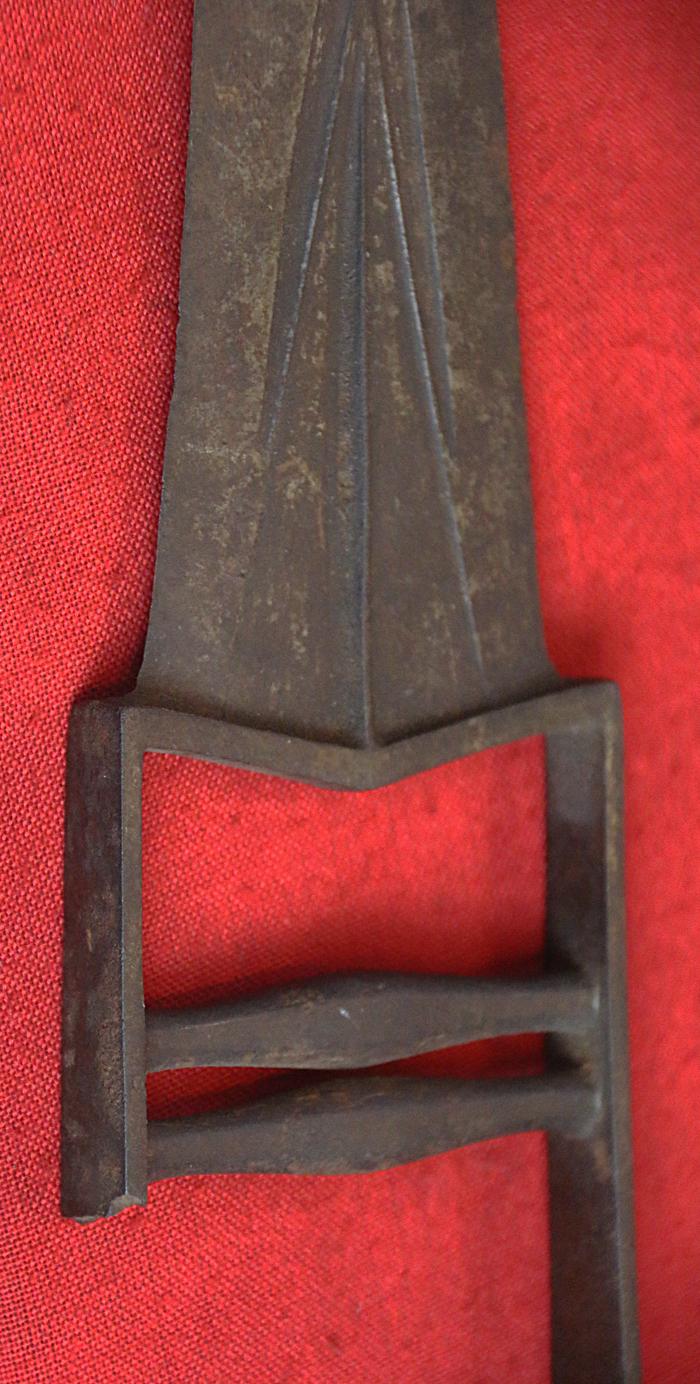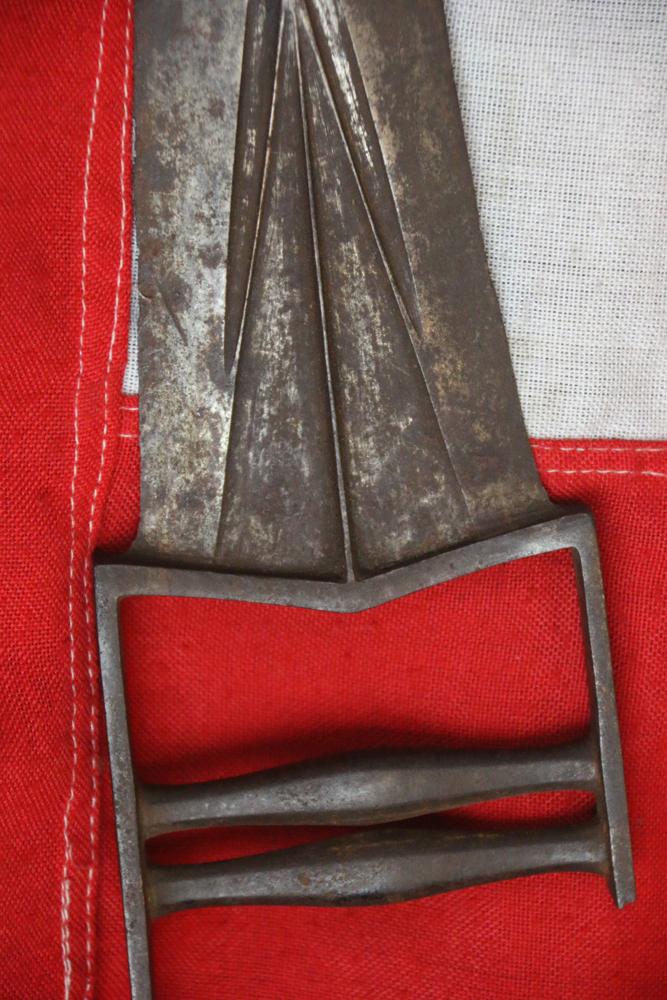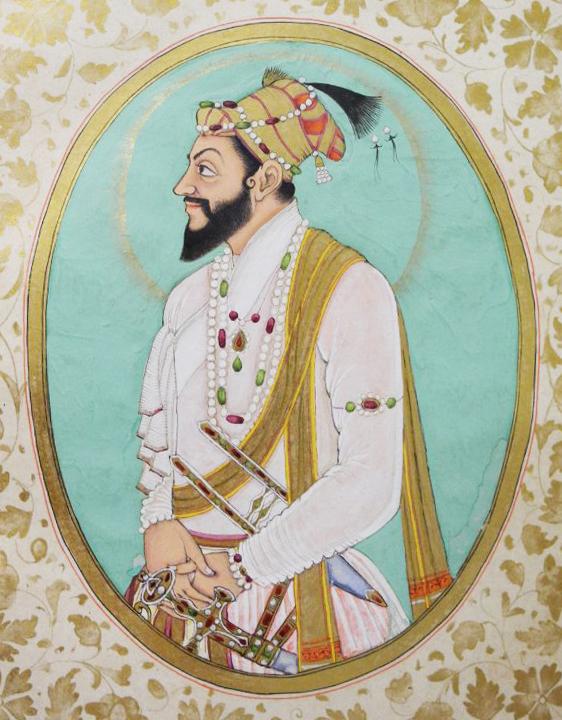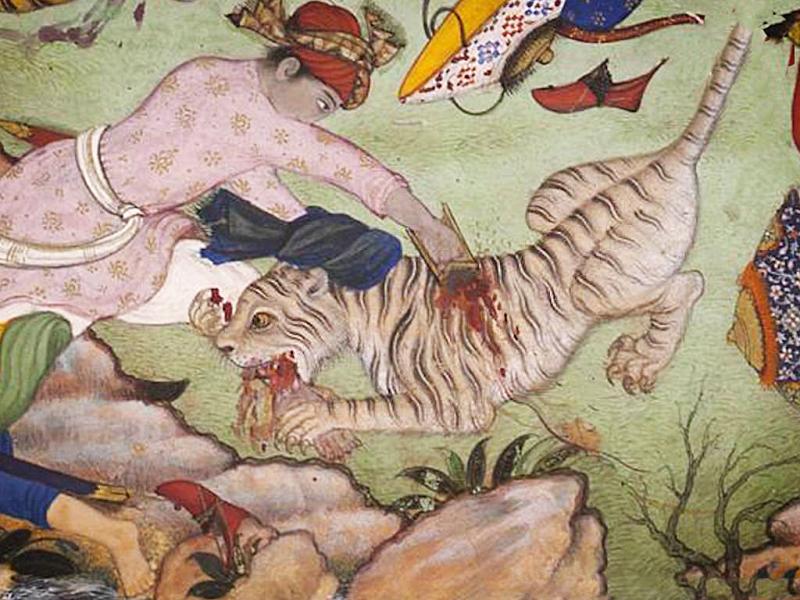An Antique 18th Century Indian Armour Piercing Punch Dagger Katar, Combat Damaged, or Adapted For Armour Wear
The Katar is an amazing combat weapon from the Indian sub continent, in combat use by select warriors and nobles for five centuries, it is a scarcely seen piece, yet highly distinctive and iconic. It was designed in several forms, some long and relatively light, others extremely robust and overtly powerful. This is one of the latter types. It’s ‘crow’s beak’ penetrating tip shows and strongest possible ribbed blade design was so efficient that effectively there was likely no body armour that could not be penetrated by such a powerful piece, once in the hands of a Katar wielding expert. It has been forged in great and powerful quality, and is a very high quality example with superior heft.
One of the bracing arms has been lost, very possibly from an opponents sword cut, although we have seen this before and we were informed by an esteemed elderly Indian warfare scholar that it has been known for one arm to ge removed so an an armoured warrior could use a the Katar while wearing the right fore-arm protector combat armour, known as the the bazu band. While wearing the bazu band armour the warriors forearm is much wider than usual and a Katar’s narrow arm extensions would preclude its use in combat while wearing armour.
The katar originated in Tamil Nadu where its Dravidian name was kattari before being altered to katar in the north. The earliest forms occur in the medieval Deccan kingdom of Vijayanagara. Katar dating back to this period often had a leaf- or shell-like knuckle-guard to protect the back of the hand, but this was discarded by the latter half of the 17th century. The Maratha gauntlet sword or pata is thought to have been developed from the katar. As the weapon spread throughout India it became something of a status symbol, much like the Southeast Asian kris or the Japanese katana. Among the Rajputs, Sikhs and Mughals, princes and nobles were often portrayed wearing a katara at their side. This was not only a precaution for self-defense, but it was also meant to show their wealth and position. Upper-class Mughals would even hunt tigers with katar. For a hunter to kill a tiger with such a short-range weapon was considered the surest sign of bravery and martial skill. The heat and moisture of India's climate made steel an unsuitable material for a dagger sheath, so they were covered in fabric such as velvet or silk. Because the katara's blade is in line with the user's arm, the basic attack is a direct thrust identical to a punch, although it could also be used for slashing. This design allows the fighter to put their whole weight into a thrust. Typical targets include the head and upper body, similar to boxing. The sides of the handle could be used for blocking but it otherwise has little defensive capability. As such, the wielder must be agile enough to dodge the opponent's attacks and strike quickly, made possible because of the weapon's light weight and small size compared to a long sword. Indian martial arts in general make extensive use of agility and acrobatic maneuvers. As far back as the 16th century, there was at least one fighting style which focused on fighting with a pair of katara, one in each hand.
Code: 24644
345.00 GBP







